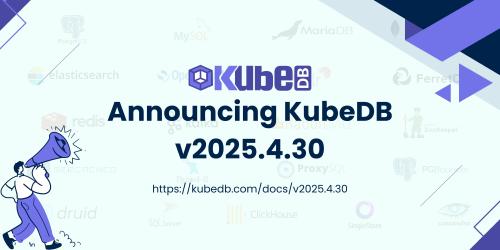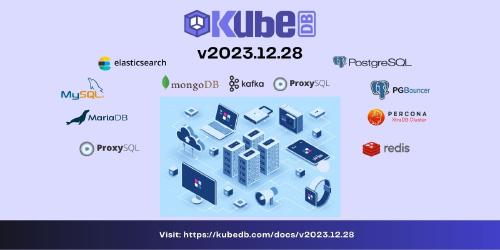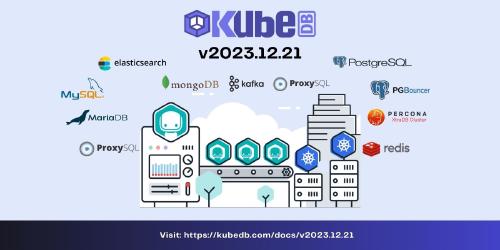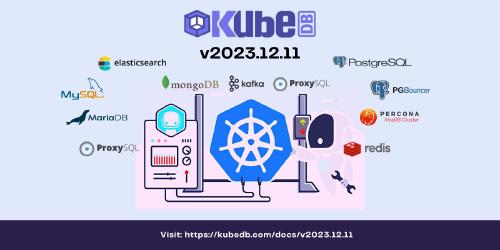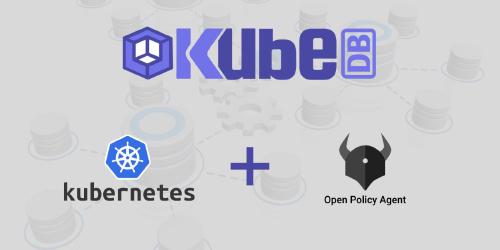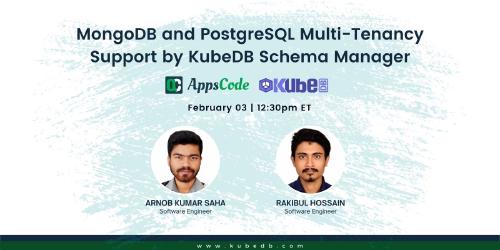KubeDB
Run Production-Grade Databases on Kubernetes
arrow_forwardKubeStash
Backup and Recovery Solution for Kubernetes
arrow_forwardStash
Backup and Recovery Solution for Kubernetes
arrow_forwardKubeVault
Run Production-Grade Vault on Kubernetes
arrow_forwardVoyager
Secure Ingress Controller for Kubernetes
arrow_forwardConfigSyncer
Kubernetes Configuration Syncer
arrow_forwardKubeDB simplifies Provisioning, Upgrading, Scaling, Volume Expansion, Monitor, Backup, Restore for various Databases in Kubernetes on any Public & Private Cloud
- task_altLower administrative burden
- task_altNative Kubernetes Support
- task_altPerformance
- task_altAvailability and durability
- task_altManageability
- task_altCost-effectiveness
- task_altSecurity

A complete Kubernetes native disaster recovery solution for backup and restore your volumes and databases in Kubernetes on any public and private clouds.
- task_altDeclarative API
- task_altBackup Kubernetes Volumes
- task_altBackup Database
- task_altMultiple Storage Support
- task_altDeduplication
- task_altData Encryption
- task_altVolume Snapshot
- task_altPolicy Based Backup

A complete Kubernetes native disaster recovery solution for backup and restore your volumes and databases in Kubernetes on any public and private clouds.
- task_altDeclarative API
- task_altBackup Kubernetes Volumes
- task_altBackup Database
- task_altMultiple Storage Support
- task_altDeduplication
- task_altData Encryption
- task_altVolume Snapshot
- task_altPolicy Based Backup

KubeVault is a Git-Ops ready, production-grade solution for deploying and configuring Hashicorp's Vault on Kubernetes.
- task_altVault Kubernetes Deployment
- task_altAuto Initialization & Unsealing
- task_altVault Backup & Restore
- task_altConsume KubeVault Secrets with CSI
- task_altManage DB Users Privileges
- task_altStorage Backend
- task_altAuthentication Method
- task_altDatabase Secret Engine

Secure Ingress Controller for Kubernetes
- task_altHTTP & TCP
- task_altSSL
- task_altPlatform support
- task_altHAProxy
- task_altPrometheus
- task_altLet's Encrypt

Kubernetes Configuration Syncer
- task_altConfiguration Syncer
RECENT NEWS/BLOG
30 OctAnnouncing ACE v2025.10.17
byArnob Kumar SahaWe are pleased to announce the release of ACE v2025.10.17. ACE v2025.10.17 focuses on improving scalability and automation for production-grade deployments. In this post, we’ll highlight the changes done in this release. Key Changes Upgrade cluster-manager-spoke feature on spoke upgrade Add Credential-less Support for AWS deployment. Fix backup session creation command Here are the components specific changes: KubeDB UI We are directly using the kubestash cli for generating the name of the kubestash-related objects to fix backup session creation command.
27 OctSee More arrow_forwardAnnouncing KubeDB v2025.10.17
byArnob Kumar SahaKubeDB v2025.10.27 introduces enhancements like rack awareness for Kafka, distributed autoscaling and advanced backup/restore for MariaDB, health check improvements for Postgres, ACL support for Redis/Valkey, and autoscaling with recommendations for ClickHouse. This release focuses on improving fault tolerance, security, scalability, and recovery capabilities for databases in Kubernetes. Key Changes Rack Awareness for Kafka: Added support for rack-aware replica placement to enhance fault tolerance. Distributed MariaDB Enhancements: Introduced autoscaling support and KubeStash (Stash 2.
- Webinar New















